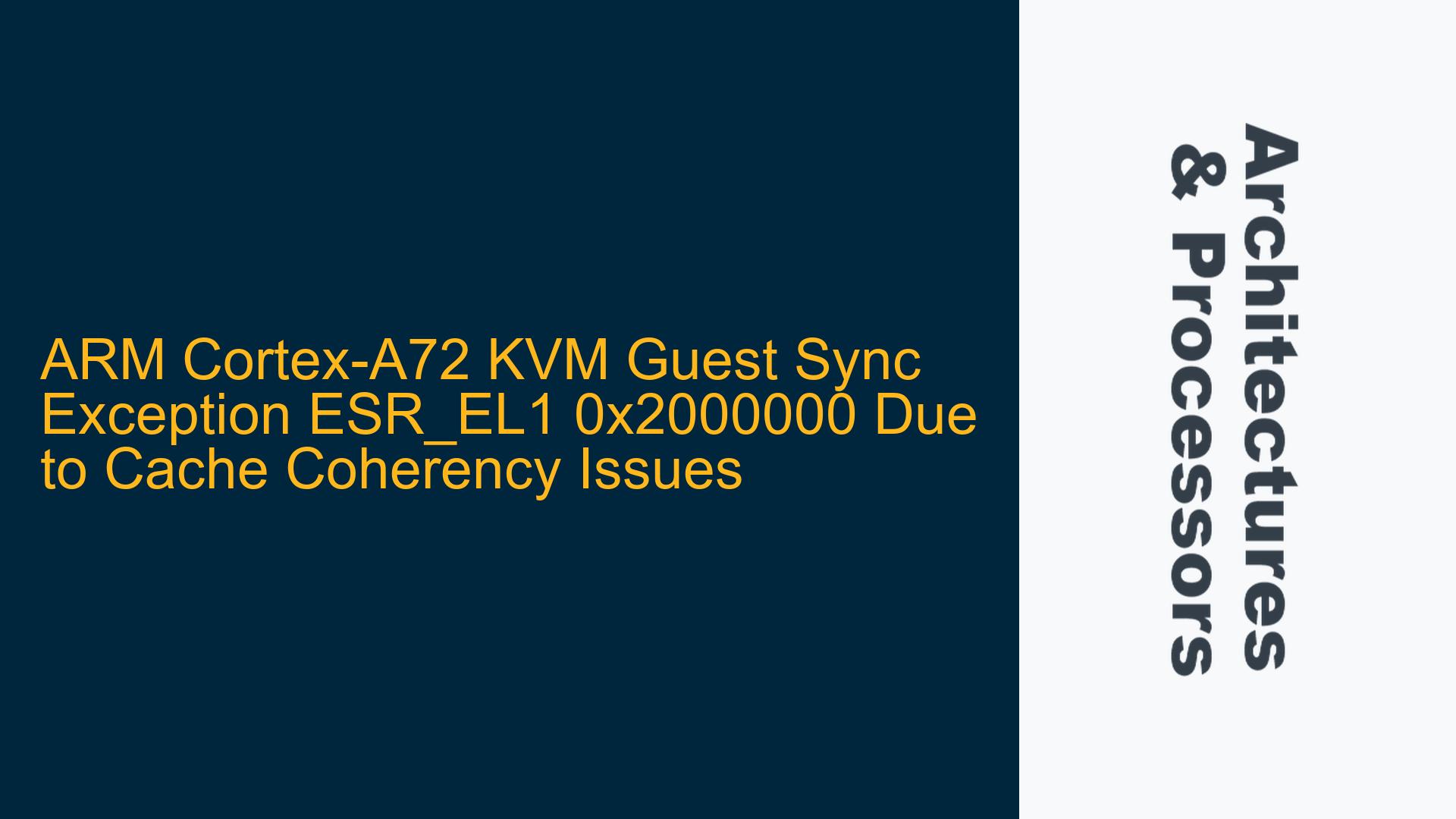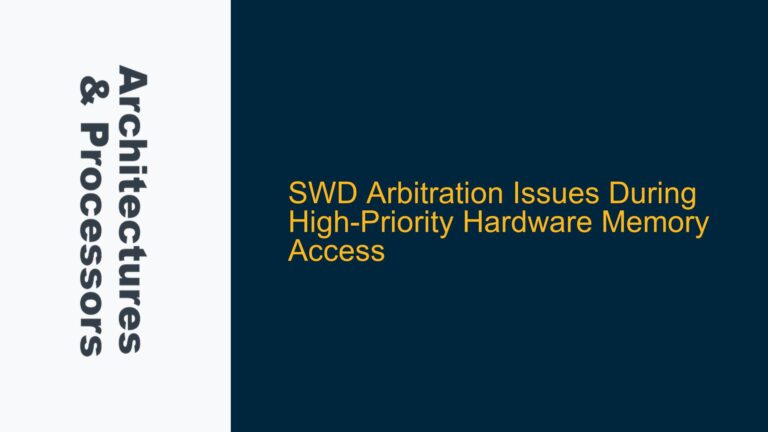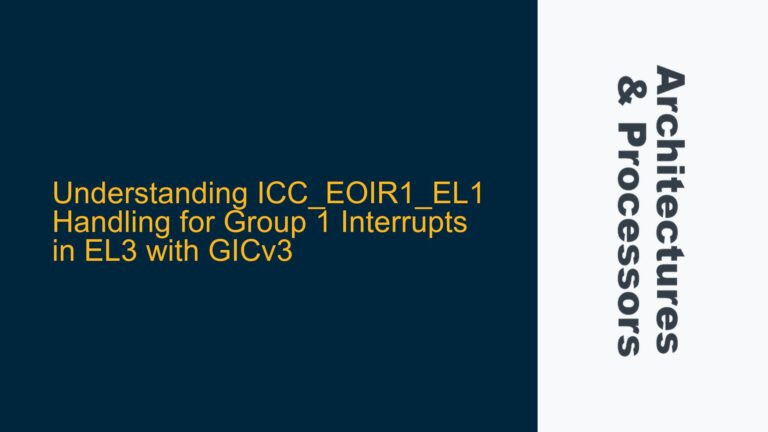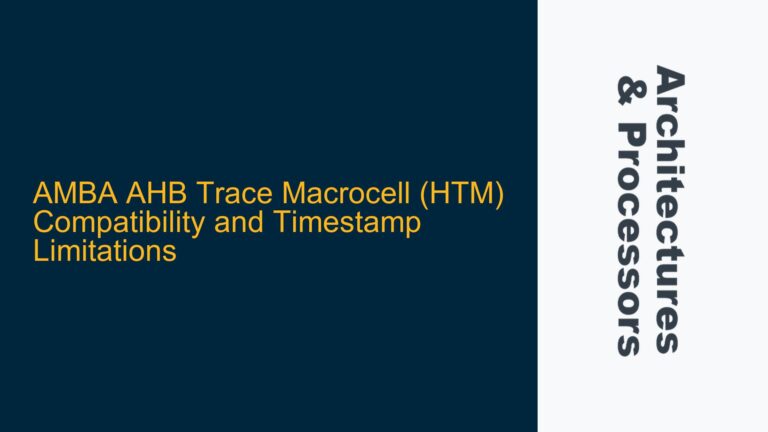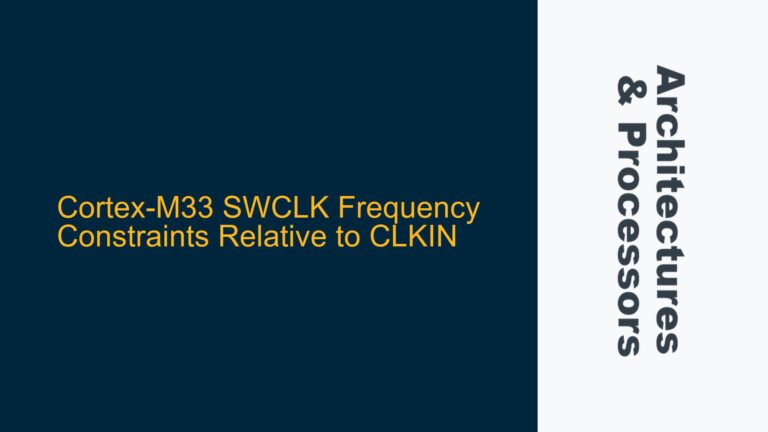ARM Cortex-A72 KVM Guest Sync Exception with ESR_EL1 0x2000000: Cache Coherency and Dynamic Code Loading
The issue at hand involves an ARM Cortex-A72-based Raspberry Pi 4B host running a KVM-accelerated OSv unikernel guest. The guest sporadically encounters a synchronous exception with the Exception Syndrome Register (ESR_EL1) value of 0x2000000, indicating an "Unknown Reason" exception. This exception occurs during the execution of dynamically loaded application code, with no consistent pattern in the faulting instructions or memory addresses. The problem is exacerbated over time, suggesting a cumulative effect, and is only reproducible under KVM acceleration, not in emulated mode (TCG).
The root cause appears to be related to cache coherency issues between the Data Cache (D-cache) and Instruction Cache (I-cache) when dynamically loading and executing code. The OSv unikernel, which combines the kernel and application in the same memory space at EL1, dynamically loads and maps application code (ELF files) into memory. This process involves modifying memory regions that will later be executed as code. If the caches are not properly synchronized, the CPU may execute stale or invalid instructions from the I-cache, leading to the observed "Unknown Reason" exception.
Cache Coherency and Dynamic Code Loading: The Core Problem
In ARM architectures, the D-cache and I-cache are typically separate and do not automatically maintain coherency with each other. When code is dynamically loaded into memory, the following sequence of events occurs:
- Memory Modification: The dynamic linker writes the new code into memory. This operation updates the D-cache but does not automatically invalidate the corresponding I-cache lines.
- Cache Staleness: If the I-cache is not invalidated, it may still contain stale instructions from previous contents of the memory location.
- Instruction Execution: When the CPU attempts to execute the newly loaded code, it may fetch stale instructions from the I-cache, leading to undefined behavior or exceptions.
The ARMv8 architecture provides mechanisms to ensure cache coherency, such as the Data Cache Clean by Virtual Address to Point of Unification (DC CVAU) and Instruction Cache Invalidate by Virtual Address to Point of Unification (IC IVAU) instructions. These instructions must be used to clean the D-cache and invalidate the I-cache after modifying memory regions that will be executed as code.
Implementing Cache Maintenance for Dynamic Code Loading
To address the cache coherency issue, the OSv page fault handler must be modified to include cache maintenance operations after dynamically loading and mapping new code. The following steps outline the necessary changes:
- Page Table Update: After adding a new page table entry and filling the page with the content of the file, the D-cache must be cleaned to ensure that the modified data is written back to memory.
- I-cache Invalidation: The I-cache must be invalidated for the corresponding memory region to ensure that the CPU fetches the updated instructions from memory rather than executing stale instructions from the cache.
- Synchronization Barriers: Data Synchronization Barriers (DSB) and Instruction Synchronization Barriers (ISB) must be used to ensure that the cache maintenance operations are completed before the new code is executed.
The GCC built-in function __clear_cache can be used to perform the necessary cache maintenance operations. This function internally executes the DC CVAU and IC IVAU instructions for the specified memory region.
Verifying the Fix and Ensuring Correctness
While the proposed fix has shown promising results in reducing the occurrence of the "Unknown Reason" exception, it is essential to verify its correctness and understand the underlying mechanisms. The following considerations are critical:
- Cache Maintenance Scope: The cache maintenance operations must be performed for all memory regions that are dynamically loaded and executed as code. This includes not only the main application code but also any dynamically linked libraries or modules.
- Performance Impact: Cache maintenance operations can introduce additional overhead, especially for large memory regions. It is important to balance the need for cache coherency with the performance requirements of the system.
- Edge Cases: The fix must be tested under various conditions, including different workloads, memory configurations, and system states, to ensure its robustness.
Additional Scenarios Requiring Cache Maintenance
The cache coherency issue is not limited to dynamically loaded code. Other scenarios that may require cache maintenance include:
- Self-Modifying Code: Any scenario where code modifies itself at runtime, such as Just-In-Time (JIT) compilers, requires careful cache management to ensure that the modified code is executed correctly.
- Memory Mappings: Changes to memory mappings, such as remapping or changing access permissions, may require cache maintenance to ensure that the CPU fetches the correct instructions and data.
- DMA Transfers: Direct Memory Access (DMA) transfers that modify memory regions used by the CPU may require cache maintenance to ensure coherency between the CPU and DMA controllers.
Conclusion
The sporadic "Unknown Reason" synchronous exception with ESR_EL1 0x2000000 in the ARM Cortex-A72 KVM guest is likely caused by cache coherency issues between the D-cache and I-cache during dynamic code loading. By implementing proper cache maintenance operations, such as cleaning the D-cache and invalidating the I-cache, the issue can be mitigated. This solution aligns with the ARMv8 architecture’s guidelines for cache management and ensures that the CPU executes the correct instructions from memory.
The fix has been empirically validated through extensive testing, demonstrating a significant reduction in the occurrence of the exception. However, further analysis and testing are recommended to fully understand the root cause and ensure the robustness of the solution across different scenarios and system configurations.
Tables
Table 1: Cache Maintenance Instructions
| Instruction | Description |
|---|---|
| DC CVAU, |
Data Cache Clean by Virtual Address to Point of Unification |
| IC IVAU, |
Instruction Cache Invalidate by Virtual Address to Point of Unification |
| DSB | Data Synchronization Barrier |
| ISB | Instruction Synchronization Barrier |
Table 2: Cache Coherency Scenarios
| Scenario | Description |
|---|---|
| Dynamic Code Loading | Loading and executing new code at runtime |
| Self-Modifying Code | Code that modifies itself at runtime, such as JIT compilers |
| Memory Mapping Changes | Changes to memory mappings, such as remapping or changing access permissions |
| DMA Transfers | DMA transfers that modify memory regions used by the CPU |
By addressing the cache coherency issues and implementing the necessary cache maintenance operations, the ARM Cortex-A72 KVM guest can achieve reliable and consistent execution of dynamically loaded code, eliminating the sporadic "Unknown Reason" synchronous exception.
